The document discusses propaganda techniques, beginning with a definition of propaganda as persuasive messaging that aims to represent the interests of a group through emotional appeals and faulty reasoning rather than logic. It notes that propaganda is intended to influence thoughts and actions and comes in many forms, but always has a persuasive function, sizeable target audience, representation of a specific group's agenda, and use of emotional appeals or faulty reasoning. The document then examines 11 common propaganda techniques: assertion, bandwagon, card stacking, glittering generalities, false dilemmas, lesser of two evils, name-calling, pinpointing the enemy, plain folk, transferring, and testimonials. It provides examples and discussion topics for analyzing different types of propaganda.
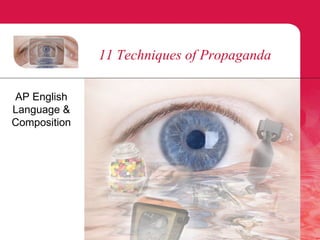






















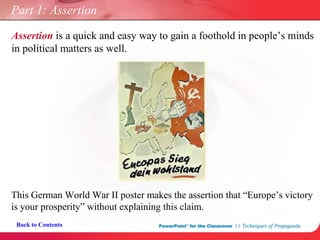

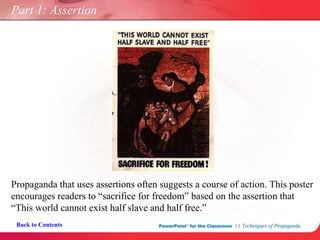
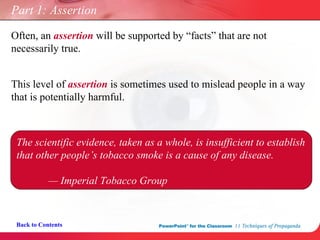




















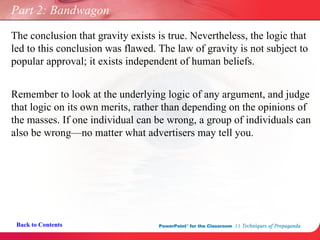
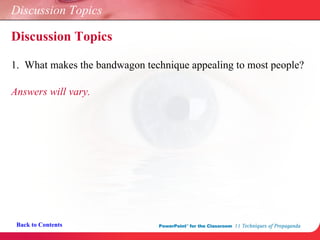


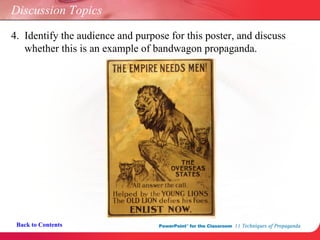












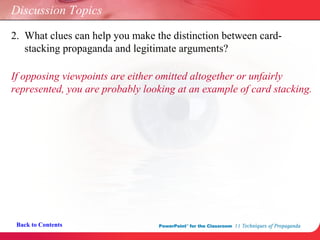














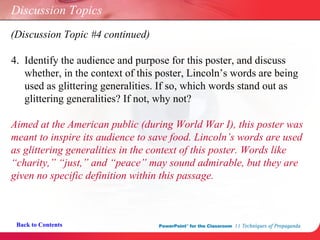



















































































































![Back to Contents Conclusion: Identifying Propaganda appeals to peer pressure, recommending a given course of action simply because “everyone is doing it” Bandwagon “ Greater Germany [Vote] Yes! On April 10”](https://image.slidesharecdn.com/11techniquesofpropaganda-110131224714-phpapp02/85/Propaganda-196-320.jpg)































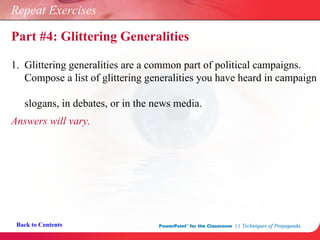

























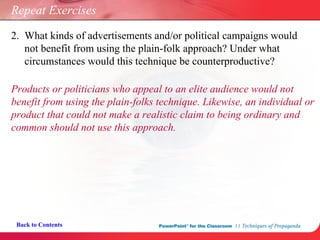














![Back to Contents Repeat Exercises appeals to peer pressure, recommending a given course of action simply because “everyone is doing it” Bandwagon Greater Germany [Vote] Yes! On April 10](https://image.slidesharecdn.com/11techniquesofpropaganda-110131224714-phpapp02/85/Propaganda-269-320.jpg)







